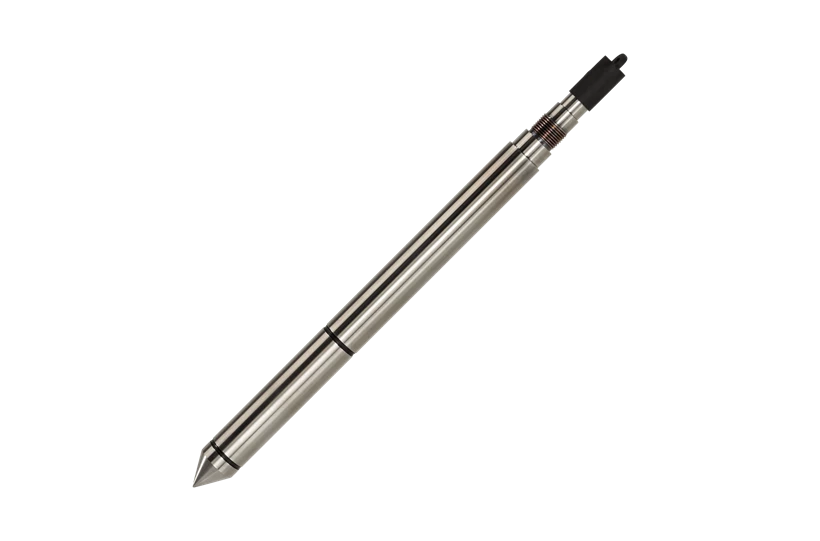
Seismic CPT is performed by pausing at regular intervals throughout the CPT and generating seismic waveforms at the surface. These waveforms are detected by a seismic module behind the CPT cone. The seismic module houses a tri-axial accelerometer that can be used with either a 10 cm2 or a 15 cm2 cone to perform seismic cone penetration testing.
The tri-axial accelerometer has the following specifications:
Applications
Seismic cone penetration testing has demonstrated to be a very accurate and reliable method to determine low strain in situ compression (P) and shear (S) wave velocity profiles. These velocities are directly related to the various soil elastic constants, such as the Poisson’s ratio, shear modulus, bulk modulus and Young’s modulus, and they are used in both Static and Dynamic Soil Analysis; to assess the response to earthquakes or dynamic loads produced by wind turbines or rotating equipment.
Another important use of estimated shear wave velocities in geotechnical design is in the liquefaction assessment of soils, since the shear wave velocity is influenced by many of the same variables that influence liquefaction. With the seismic module these wave velocity profiles can be obtained in an efficient and reliable manner.
Get the most from your equipment
Royal Eijkelkamp supplies not only the equipment to perform Seismic CPT but also the specialist software required to analyse the seismic data. Our experienced staff can also provide training on how to perform the test and analyse the data to make sure you get the most out of this technique.
| Seismic module | |
|---|---|
| Sensitivity (±10 %) | 10.2 mV | (m/s²) |
| Measurement Range | ±490 m/s² pk |
| Frequency Range (±5 %) | 2 to 5000 Hz |
| Frequency Range (±10 %) | 1.4 to 6500 Hz |
| Resonant Frequency | ≥25 kHz |
| Broadband Resolution | 0.002 m/s² rms |
| Non-Linearity | ≤1 % |
| Transverse Sensitivity | ≤5 % |

Need advice choosing the right product for your application? Our specialist Sven is happy to help.